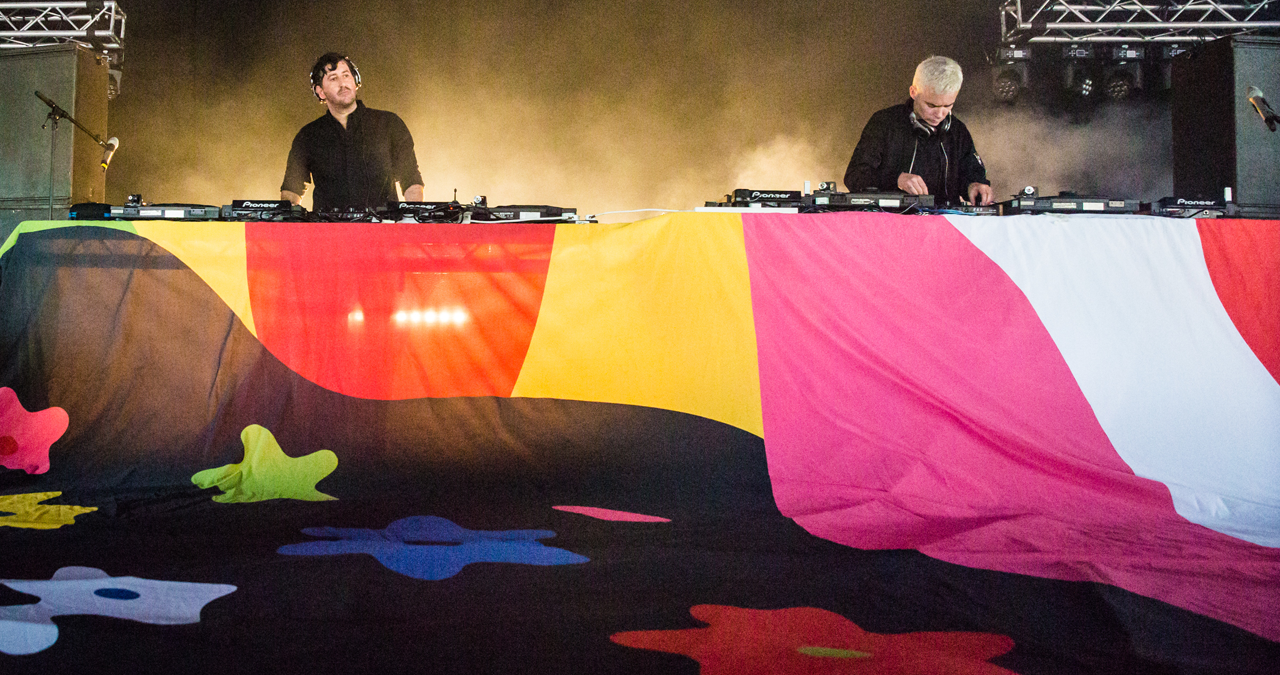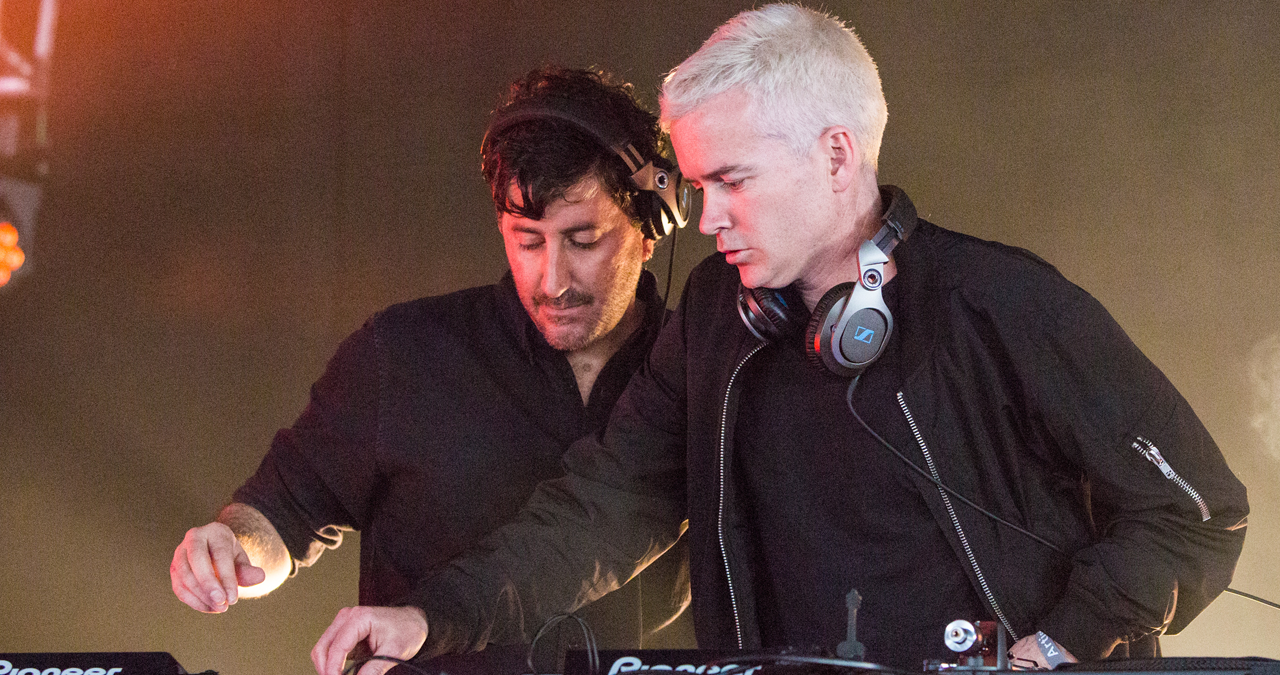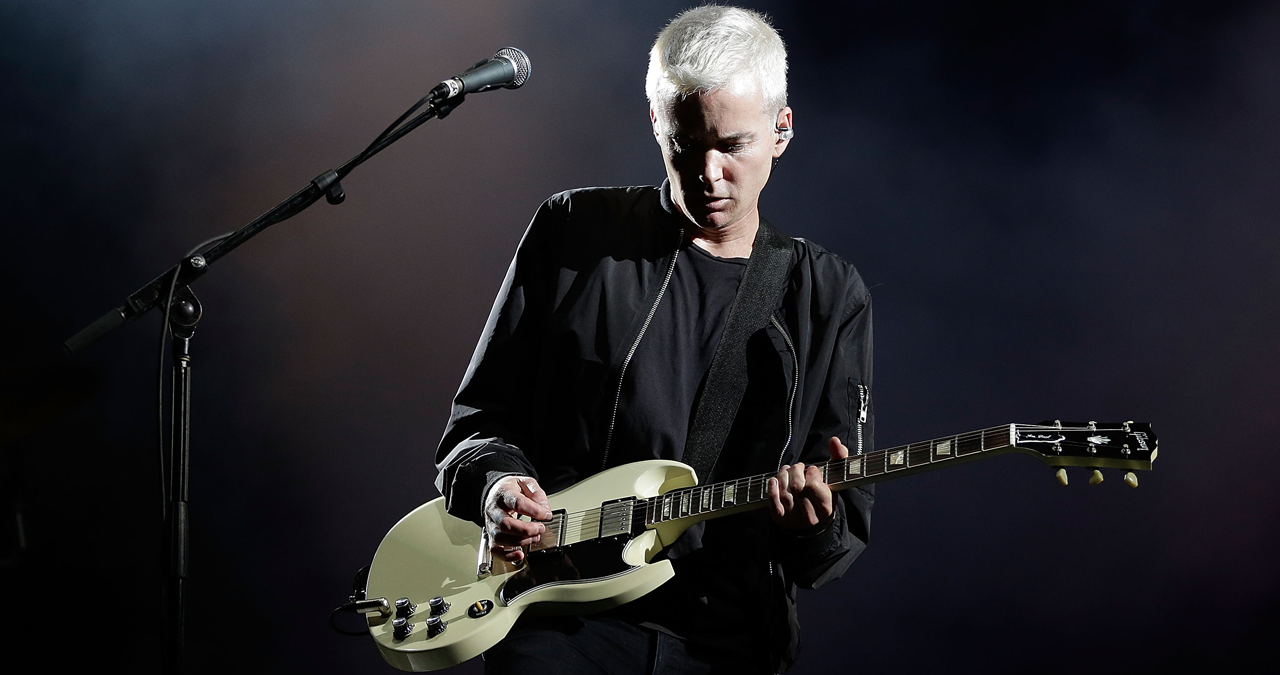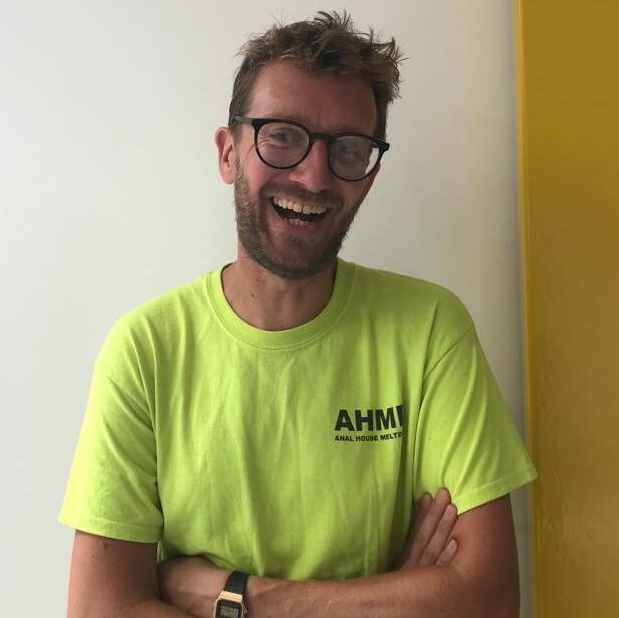“We lost our minds at various stages of this”: How the Avalanches gradually constructed the stunning follow-up to Since I Left You over 16 years
Lifting the lid on the lost years, creative blocks and colossal sample-clearing process that resulted in the immaculate Wildflower

RECORDING WEEK 2025: Few bands have been shrouded in as much mystery, smoke, mirrors and rumours about just what they’re up to as Melbourne’s the Avalanches in the period between their first and second albums.
This Australian collective redefined sample culture for a new generation with their extraordinary 2000 debut album Since I Left You. A magical dream of a record, swimming with ideas - carefully snipped from shared record collections.
It was the soundtrack to house parties around the world and spotlighted the underlying artistry of crate-digging.
Likened to De La Soul’s Three Feet High and Rising, DJ Shadow’s Endtroducing or Paul’s Boutique by the Beastie Boys for its impact upon electronic musical culture, reviewers fell over themselves to evangelise about the album’s qualities.
The album is regularly included in those "must-hear before you die" album lists while The Guardian described its dense world of samples and sonic snatches as achieving, “an almost psychedelic effect, propelling you around the world in 60 minutes, leaving you dizzy with pleasure.” Pitchfork were equally as enthused, breathlessly awarding the record 9.5 out of 10, claiming it “sounds like nothing else”.
With a debut of this calibre, it was natural that demand for a follow up was equally as weighty.
And so, over the course of the next decade, the Avalanches' second album was subsequently announced, shelved, teased, and shelved again while the band members themselves remained hidden from view. It was clear that it was going to take a while…
It wasn’t until 2016 that The Avalanches officially returned with an album that - most would agree - was worth the wait.
The vivid Wildflower, was, supposedly, still being worked on until a few months before its release. The Avalanches’ chief Robbie Chater and Tony Di Blasi were the only original members still left at the helm when it came out. Now a duo, the record re-established the band as a living, breathing creative unit.
Want all the hottest music and gear news, reviews, deals, features and more, direct to your inbox? Sign up here.
Chater told the Guardian in 2016 that the record’s creation had experienced numerous bumps in the road. “Well, in our minds, I think we thought we were close to finishing it [in 2007]. I remember around that point, we actually thought: ‘It’s just around the corner’. Maybe we had so much music hanging around that it felt like a record was inevitable. Maybe we just needed to believe that it was really close, to keep us going. But looking back now, we were kind of nowhere near.”

The Avalanches began life as a loose punk rock rabble inspired by the Beastie Boys with different incarnations of the group under various names (including Swinging Monkey Cocks and Quinton's Brittle Bones).
Initially formed around Chater and Darren Seltmann alongside Di Blasi and DJ Dexter Fabay, it was in the mid-nineties where they found their calling via a Yamaha Promix 01 and Akai S2000 sampler. They soon became obsessed by the concept of sampling. A sample and loop-based workflow, defined by many as 'plunderphonics' became the Avalanches’ forte.
The debut record that became Since I Left You was released in November 2000, born out of a painstaking and lengthy creative process (which you can read more about in our exploration of key track Frontier Psychiatrist, here).
Estimates claim that more than 3,500 samples were cut up and incorporated into the record. This time-devouring process found Chater and Seltmann delving into their hefty record collections to draw on everything from Madonna to children’s LPs, soundtracks, a pinch of seventies disco and beyond.
But while the Avalanches were hungry to cannibalise whatever colourful raw ingredients they could get their hands on, a disbelief that this process would result in any potential commercial success meant they never noted down what they actually used.
As Chater told Sound on Sound, "We were really unorganised and were just sampling on the fly as tracks progressed. We had no idea the record would get such a wide-scale release so we saw no need to keep track of what we were using - we were definitely guilty of harbouring a 'No-one's going to listen to it anyway' sort of attitude. Plus that was in our days of getting kinda, um, lubricated so who knows. It's all kinda fuzzy!"
The album’s non-stop flow certainly bristled with an infectious wide-eyed optimism and hinted at self-discovery with samples woven together to tell their story.
Frontier Psychiatrist is one of the record's most memorable - and most psychedelic - moments. The track positioned the Avalanches at the centre of a new sample-indebted musical era, as well as suggesting they were approaching their work with a sense of impish humour.
“We learned the hard way, but when you just start sampling without a clear goal, the samples end up dictating what the songs sound like,” Seltmann told Pitchfork. Chater added: “Frontier Psychiatrist was a good example of something we didn’t plan and just happened from us just [messing] around.”.
According to Chater, the Akai S2000 was at the foundation of this approach to sampling, letting them work with floppy disks and zip drives and a step forward from the Akai S900 they previously utilised.
He told Rolling Stone Australia: “The S900, you could have like, eight seconds of music on one floppy. So by the time you have a drum beat and a sample, that was pretty much it.”
“[With the S2000] we were like, ‘Wow, we can really express ourselves now in detail. Songs can have intros and outros, three different drumbeats, and percussion, and vocal samples, and backing vocal samples’. Now I look back at it and it’s so primitive, but for us, it was amazing.”
Though now being masters of their craft, making a follow up to Since I Left You was always going to be a tough assignment, particularly as the album was universally lauded for how meticulously stitched together it had been.
In the early to mid-2000s, Australian electronic music was peaking with acts like Cut Copy and the Presets shifting huge amounts of records, but the Avalanches were nowhere to be seen.
In an interview with DJ Mag, Chater recalled how they continued to get offers to tour even after five years of silence following the release of their debut album.
“Financially we desperately could have done with the work,” he said. “But we had to resist. As the years dragged on, we didn’t want to be a band trading off one record. We set our sights on the long game and feel it paid off. But I do wonder: what would have happened if we followed up in 2002?”
Although their was official radio silence, work was progressing in-studio. Then-member Darren Seltmann described the record in 2005 at that phase as 'ambient world music'. Two years later the group posted a message on their website, stating how, “it’s much more hip hop than you might expect, and while there is still no accurate estimated time of arrival, were sure you’re gonna love it when it arrives. much of last year was spent cutting up the spoken word/instructional records we need to tell the album’s musical story, and we have some 40 odd songs we’re narrowing down and finishing. so its real, it exists.”
Perhaps they were getting ahead of themselves a little there, after all, it would be a further nine years until the album was finally on shelves.

This can be put down to various obstacles. Chater suffered with alcohol dependency while he also succumbed to various autoimmune diseases, making him unable to work for the best part of three years.
The band’s label Modular collapsed during this period while other projects took up their time - including work on a score to King Kong - another project that failed to get off the ground.
An expert sample-clearer, Pat Shannahan, also known as ‘The Detective’, spent five years trying to make sure the music on what would become Wildflower was within copyright laws. This even involved writing to Paul McCartney and Yoko Ono to get permission to use a sample of the Beatles' Come Together (as sung by a bunch of kids from a high school in Melbourne).
Ultimately, there’s no overall answer to why the album was delayed by so long - just a myriad of hiccups, personal issues, dead-ends and copyright clearance requests.
As Di Blasi told Triple J: “We were touring 'til 2003 and then we came back home and just kept making music like we'd always done but we didn't really have a plan. Before we knew it we had so much music but it was just a mess. It didn't really fit together as a record so it took us a long time to figure out what this record was going to be."
To the widespread relief of their fans, teasing of the new album finally began in April 2016 before a formal announcement took place in June that year. Then to the amazement of everyone, the release of the record’s exuberant first single, Frankie Sinatra, followed shortly after. Its release was deemed to be of such seismic news that the Guardian even devoted a live blog to it.
Beginning with their richly detailed blend of samples, it’s the guest verses from Detroit rapper Danny Brown and MF Doom that elevated Frankie Sintara with an energy, intensity and endearing weirdness.
In an interview with Zane Lowe for Beats 1 Radio, Chater and Di Blasi talk of the roots of the collaboration. “The initial plan was to make a crazy loose rock record, but with samples. Danny’s voice is almost like a punk rock voice sometimes, so we thought it’d be perfect - but we thought, ‘He’d never have heard of us’.”
But Brown’s manager was a fan, and enlisted the rapper to work with the band. The collaboration was initially purely via email before he flew to Melbourne to work with the pair in the studio.
Rumours of Frankie Sinatra’s existence go back to 2012 with Danny Brown revealing details to Pitchfork and how ‘ecstatic’ he was to be working with them. Still, while it might be one of the oldest moments from Wildflower, it was also one of the toughest to complete. “That got mixed for about two and a half years” they told Zane Lowe with “over a hundred” different versions.
Frankie Sinatra elaborated further on the sampling template established on Since I Left You. Built around a calypso record called Bobby Sox Idol by Wilmoth Houdini that the band used to play out when DJing. It also featured an oompah band rhythm and a jazzy sample of The Sound of Music’s My Favourite Things.
As with their debut, the entirety of Wildflower was created using samples. Chater told Spin that there were perhaps even more on this record than their debut. This, combined with their new-found acclaim, made it tricky to gain clearance for some of the sounds they wanted to include.
“It’s so fragmented,” he said. “Every little footstep and voice and yell and clatter and cowhorn and dog barking, it’s just ridiculous… it was a more difficult process. With the first record, nobody knew who we were, so the samples were easier to clear. No negotiations. The [sample] negotiations on this record seemed to go on a lot longer: They started clearing them, like, four or five years ago.”
Their old-fashioned gear also presented certain challenges when it came to producing the tracks with Chater utilising a sequencing program from the nineties. "I had to keep the old beige G3 [Apple Mac computer] with OS7 because it wouldn't run on anything newer than that,” he told Triple J. “That [had the] spinning colour wheel the first five years. I think it was black and white..."
While the creative struggles and challenges surrounding the birth of Wildflower are the stuff of legend, the end result proved a blindingly brilliant listen. Arguably a more successful demonstration of their craft than the revered Since I Left You, and sporting some of the band’s most beautiful music. Wildflower was that rare thing - a much-delayed album that was actually worth the wait.
There was also room for more guests. Harmony featuring Jonathan Donahue of Mercury Rev was one of their finest while further single Because I’m Me’ with Camp Lo, was unadulterated hip-hop-leaning joy. Sadly, collaborations with August Darnell from Kid Creole and the Coconuts, Luke Steele from Sleepy Jackson and Empire of the Sun and Jens Leckman failed to make the final version.
After universal acclaim, The Avalanches were definitively back and firing on all cylinders.
And what's more, the group's third record, We Will Always Love You dropped a mere four years later. In Avalanches' terms, that’s a rapid turnover.
Their pastoral psychedelic take on sample culture continues to endure and has a glorious, timeless quality. “I love thinking about where sound came from and what was going on in a person's life at the time when they made a recording all those years ago,” said Di Blasi to Triple J. “It's like their experiences get mixed up with ours and it just creates this thing that's more than the sum of its parts."
"It's like The Avalanches is all these voices throughout time and we're just a conduit for it.”
Jim Ottewill is an author and freelance music journalist with more than a decade of experience writing for the likes of Mixmag, FACT, Resident Advisor, Hyponik, Music Tech and MusicRadar. Alongside journalism, Jim's dalliances in dance music include partying everywhere from cutlery factories in South Yorkshire to warehouses in Portland Oregon. As a distinctly small-time DJ, he's played records to people in a variety of places stretching from Sheffield to Berlin, broadcast on Soho Radio and promoted early gigs from the likes of the Arctic Monkeys and more.
You must confirm your public display name before commenting
Please logout and then login again, you will then be prompted to enter your display name.




